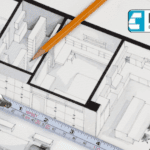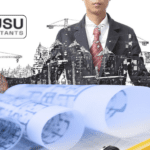Pushing the Boundaries with Structural Design Engineering: How Far Can We Go?
Introduction
Structural design engineering is a field that continuously evolves and pushes the limits of what’s possible in the world of architecture and construction. From skyscrapers that seem to touch the heavens to bridges that span seemingly insurmountable gaps, this discipline is all about redefining what’s achievable. In this article, we’ll explore the exciting realm of structural design engineering and investigate just how far we can push the boundaries.
The Marriage of Art and Science
At its core, structural design engineering is a captivating blend of art and science. It’s not just about erecting functional buildings and bridges; it’s about creating iconic landmarks that stand the test of time. Visionary architects and engineers work hand in hand to transform their ideas into awe-inspiring structures that capture the imagination of the world.
Materials Revolution
One of the key drivers in pushing the boundaries of structural design engineering is the continuous development of materials. Gone are the days when concrete and steel were the sole options. Today, engineers have access to an array of cutting-edge materials, including carbon fiber composites, self-healing concrete, and innovative alloys. These materials are not only stronger and more durable but also environmentally sustainable.
Sky-High Skyscrapers
Skyscrapers have always been a symbol of human achievement, and we’re continually reaching new heights. From the Burj Khalifa in Dubai to the Jeddah Tower in Saudi Arabia (still under construction at the time of writing), engineers are exploring innovative ways to reach higher and higher. These towering structures incorporate advanced design and construction techniques to ensure stability, safety, and sustainability.
Bridge Engineering Marvels
Bridges, both practical and artistic, provide a unique canvas for structural design engineers. Think of the Millau Viaduct in France or the Akashi Kaikyō Bridge in Japan. These structures demonstrate how engineers can span seemingly impossible distances while maintaining aesthetics and functionality. The development of cable-stayed and suspension bridges has been a game-changer in this regard.
Sustainable Innovation
Sustainability is at the heart of modern structural design engineering. The goal is to create structures that harmonize with the environment, conserve resources, and minimize carbon footprints. This includes incorporating green building technologies, optimizing energy usage, and exploring concepts like vertical forests and energy-efficient designs.
Challenges and Innovations
With every leap forward comes a set of challenges. Seismic resilience, extreme weather conditions, and environmental impact are some of the challenges that engineers must address. However, it’s through overcoming these obstacles that the field continues to advance. Innovations in seismic design, climate-adaptive structures, and resilient construction methods are revolutionizing the industry.
The Future of Structural Design Engineering:
The future of structural design engineering is filled with exciting possibilities. As technology advances, we can expect the integration of artificial intelligence for more precise analysis and optimization of designs. 3D printing may revolutionize the construction process, enabling more intricate and cost-effective structures. As the world grapples with urbanization and population growth, innovative solutions for affordable housing and sustainable urban planning will become paramount.
Conclusion
Structural design engineering has come a long way, and there’s no sign of it slowing down. As we look to the future, the question is not how far we can push the boundaries, but how creatively and responsibly we can do so. With a commitment to sustainability, innovation, and a passion for turning dreams into reality, structural design engineers will continue to shape the skylines of tomorrow, leaving a lasting legacy of human achievement.
Disclaimer: This content is provided solely for your review. Erusu Consultants takes no liability for this article. The reader is advised to form their own opinion. Please consult a Structural Engineer before making any final decisions.






